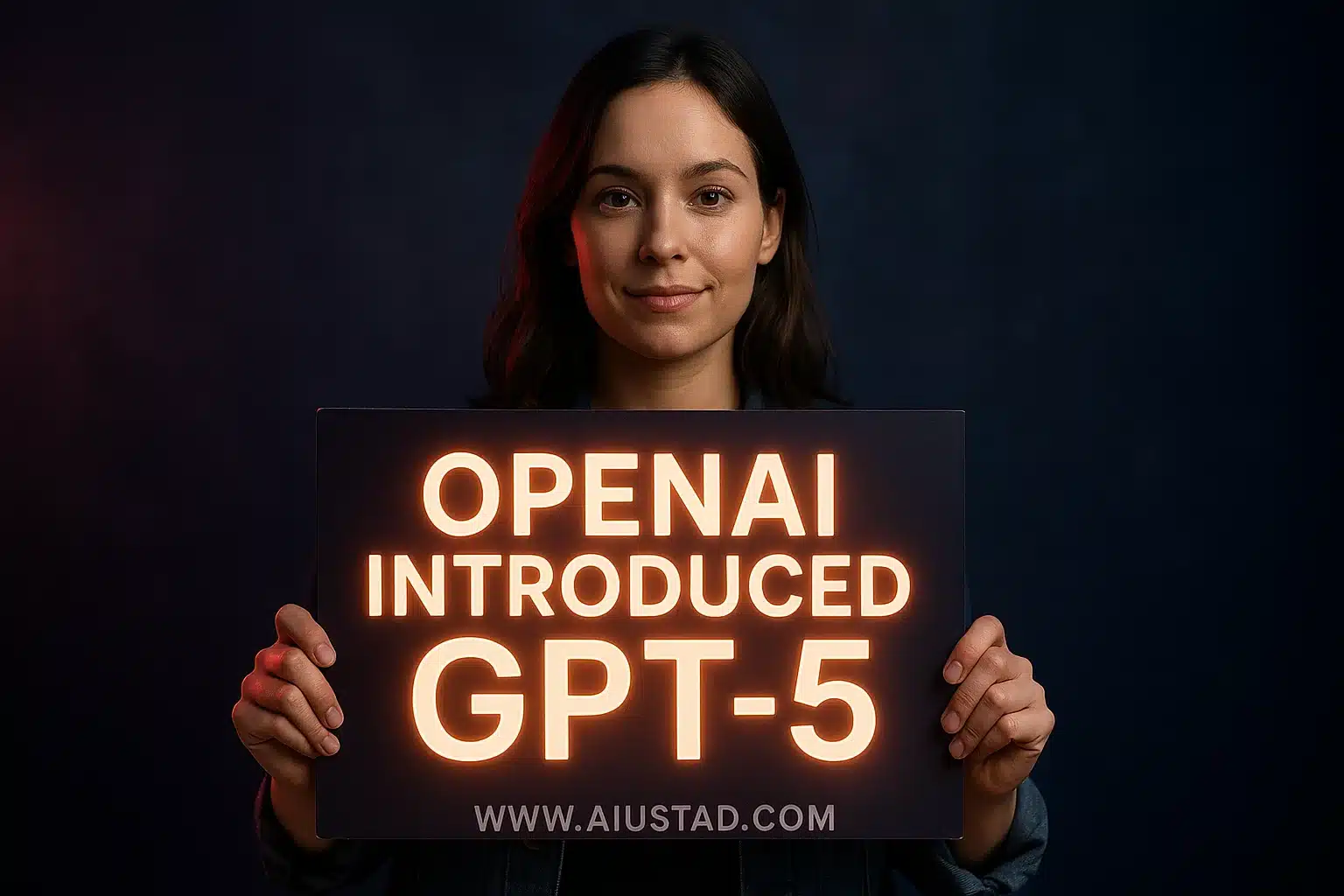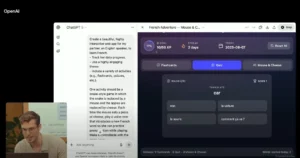I’m thrilled to share the latest buzz in the AI world! OpenAI has just launched GPT-5, their smartest and most powerful model yet. It’s faster, more accurate, and feels like chatting with a real expert. In this blog, I’ll dive into its features, use cases, competitors, pricing, and my personal take as a user. Let’s explore why GPT-5 is making waves!
What is GPT-5?
GPT-5 is OpenAI’s newest AI model, released on August 7, 2025. It’s a massive upgrade from GPT-4 and earlier models like GPT-4o. This model combines advanced reasoning, multimodal capabilities, and a human-like feel. It’s designed to handle complex tasks with ease, from coding to answering health questions.
Key Features of GPT-5
GPT-5 comes packed with exciting features. Here’s what makes it stand out:
1. Advanced Reasoning
GPT-5 can “think” before answering. It uses chain-of-thought reasoning to break down complex problems. This makes it great for math, science, and logic tasks. It scored 94.6% on the AIME 2025 math benchmark and 88.4% on GPQA without tools.
2. Multimodal Capabilities
Unlike older models, GPT-5 handles text, images, audio, and soon video. It can process images for tasks like visual problem-solving and supports real-time voice interactions. This builds on Sora, OpenAI’s text-to-video tool.
3. Reduced Hallucinations
Hallucinations (when AI makes up facts) are down by 65% compared to the o3 model and 26% compared to GPT-4o. This means more accurate and reliable answers, especially for health and factual queries.
4. Safe Completions
GPT-5 introduces “safe completions.” Instead of refusing risky questions, it provides high-level, safe answers. For example, it avoids detailed responses in sensitive areas like virology to prevent misuse.
5. Personalization
You can choose from four personalities: Cynic, Robot, Listener, or Nerd. You can also pick chat colors for a fun, customized experience. This makes GPT-5 feel more like a personal assistant.
6. Large Context Window
With a 256,000-token context window, GPT-5 can handle long conversations, documents, or code without losing track. This is a big jump from GPT-4o’s 200,000-token window.
Use Cases of GPT-5
GPT-5 is versatile and can be used in many ways. Here are some key applications:
| Use Case | Description |
|---|---|
| Coding | GPT-5 excels at writing, debugging, and designing software. It scored 74.9% on SWE-Bench Verified. |
| Health Queries | It provides accurate health advice, scoring high on HealthBench. Always consult a doctor, though! |
| Content Creation | From blog posts to marketing copy, GPT-5 generates high-quality, creative text. |
| Education | It offers personalized tutoring and adaptive learning for students. |
| Business Automation | Companies use GPT-5 for customer service, data analysis, and workflow automation. |
Example: OpenAI demoed GPT-5 creating a French-learning app with flashcards and quizzes in seconds. It’s perfect for rapid prototyping and creative tasks.
Competitors of GPT-5
GPT-5 faces tough competition. Here’s how it stacks up:
Claude from Anthropic is strong in reasoning. Its Opus 4.1 scores high on coding tests, close to GPT-5.
Grok by xAI, from Elon Musk, claims to beat GPT-5 in some benchmarks. Like on Humanity’s Last Exam.
Gemini from Google is fast and multimodal. Its 2.5 Pro handles big contexts well.
Other players like Llama from Meta offer open-source options. But GPT-5 edges out in speed and tool use.
Pricing of GPT-5
OpenAI made GPT-5 accessible to everyone, including free users. However, usage limits vary by tier:
For ChatGPT users:
- Free Tier: Limited access to GPT-5, reverting to GPT-4 after a quota.
- Plus Tier: Higher usage limits for GPT-5.
- Pro Tier: Unlimited access to GPT-5 and GPT-5 Pro.
- Team/Enterprise/Edu: Access to GPT-5 Pro with extended reasoning, rolling out soon.
For developers via API:
- GPT-5: $1.25 per million input tokens, $10 per million output.
- GPT-5 Mini: $0.25 input, $2 output.
- GPT-5 Nano: $0.05 input, $0.40 output.
There’s a 90% discount on cached inputs. It’s cheaper than rivals like Claude’s $15 output. This makes GPT-5 a good pick for startups or personal use.
Read Now: What is Perplexity Comet Browser
Comments by AI USTAD
As someone who’s tested GPT-5, I’m blown away by its performance. I tried it for coding a simple web app, and it delivered clean, usable code in minutes—way faster than GPT-4o. The reasoning feature is a game-changer; I asked it to solve a tricky math problem, and it walked me through each step like a patient tutor.
For health queries, I tested it with a question about diet plans, and it gave precise, context-aware advice while reminding me to consult a professional. The personalization options, like choosing a “Listener” personality, made chats feel warm and engaging. However, it’s not perfect. The free tier’s quota runs out fast, and complex multimodal tasks can still have minor hiccups. Compared to Claude 4, GPT-5 feels more versatile, but Claude’s safety focus is a close rival. Overall, GPT-5 feels like a PhD-level assistant in my pocket, and I’m excited to see how it evolves!
Conclusion
GPT-5 is a massive leap for AI. Its reasoning, multimodal features, and reduced hallucinations make it a top choice for coders, students, and businesses. While competitors like Claude 4 and Grok are strong, GPT-5’s versatility sets it apart. Whether you’re a free user or a developer, it’s worth trying. Visit OpenAI to explore GPT-5 today!
FAQs
When was GPT-5 released?
GPT-5 was released on August 7, 2025.
Can free users access GPT-5?
Yes, free users can access GPT-5 with limited usage. After the quota, it switches to GPT-4.
What are GPT-5’s variants?
The variants are gpt-5, gpt-5-mini, gpt-5-nano, and gpt-5-chat, available via the API.
How does GPT-5 compare to Grok?
A: GPT-5 is more multimodal and has a larger context window, while Grok focuses on truth-seeking.
Is GPT-5 safe for health questions?
It’s more accurate but always consult a doctor for medical advice.
On What Platfroms i can access GPT5 unlimited for Free?
Microsoft Copilot & Perplexity Offers Unlimited Free use of openai GPT5



